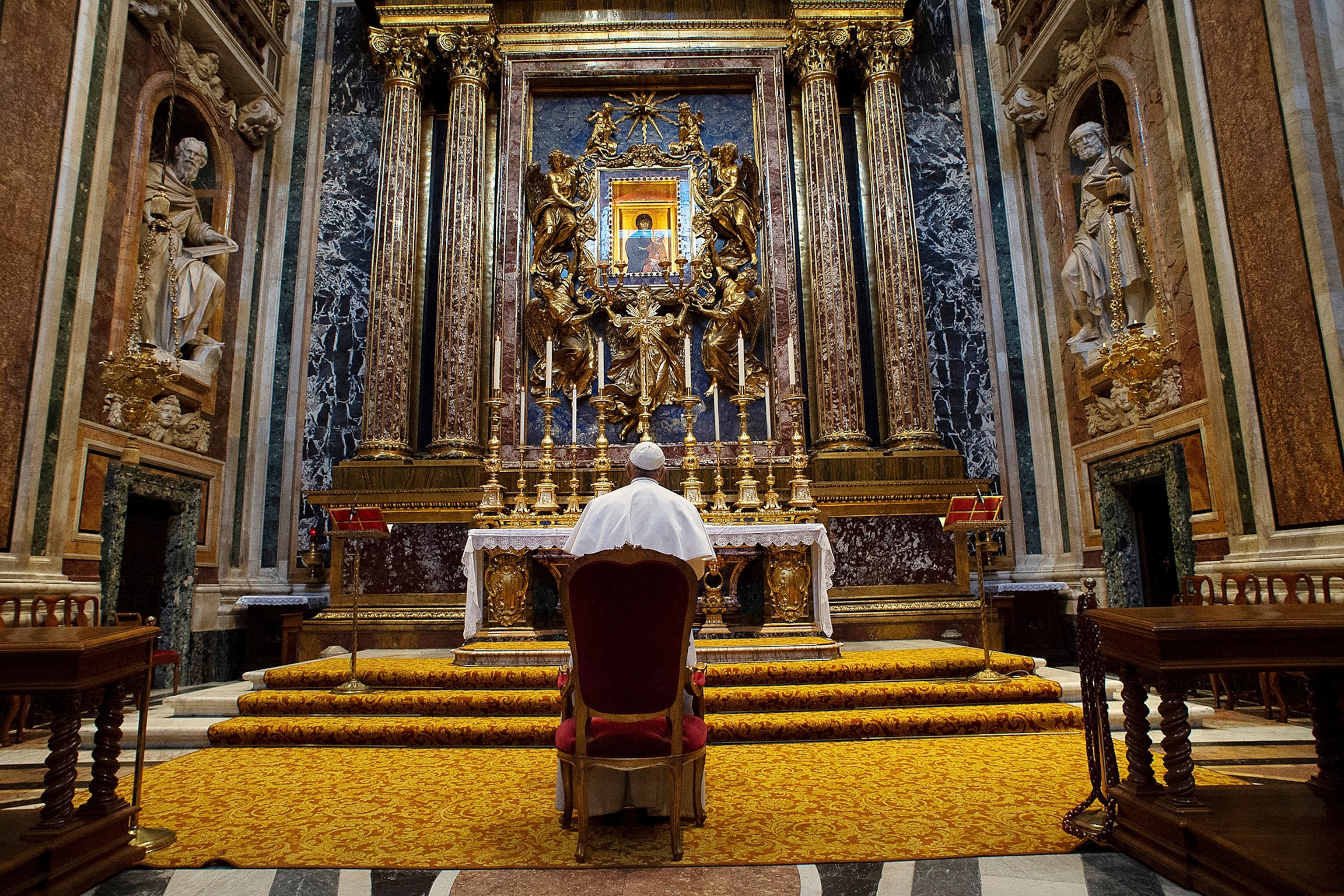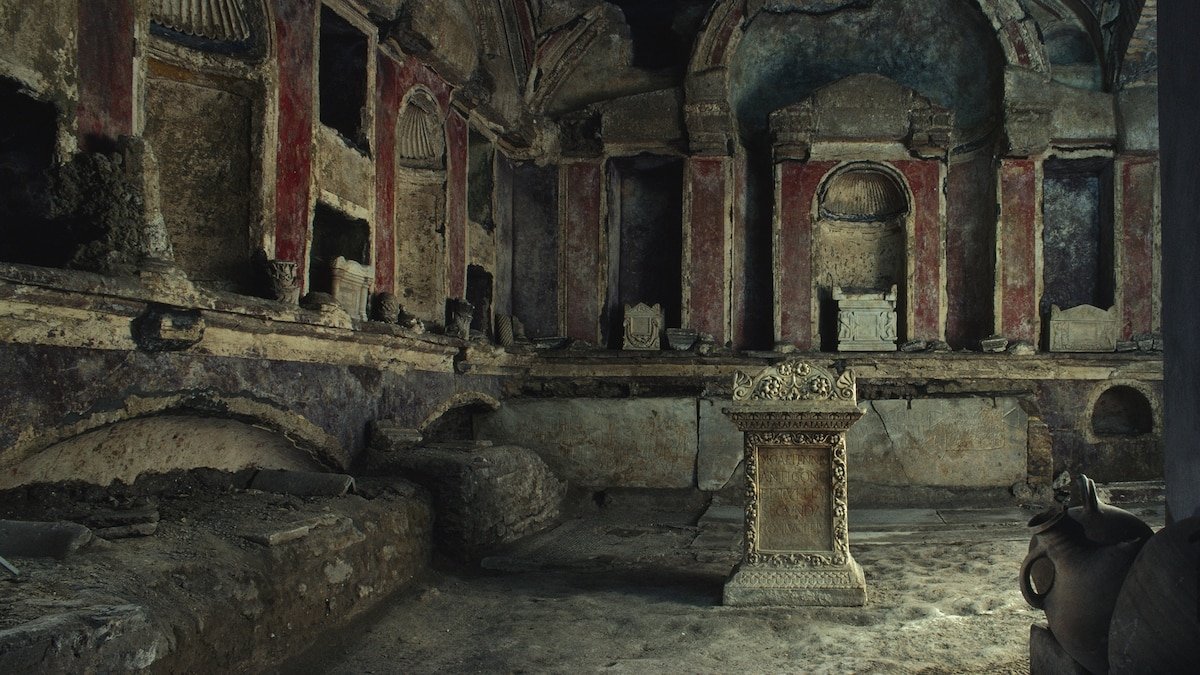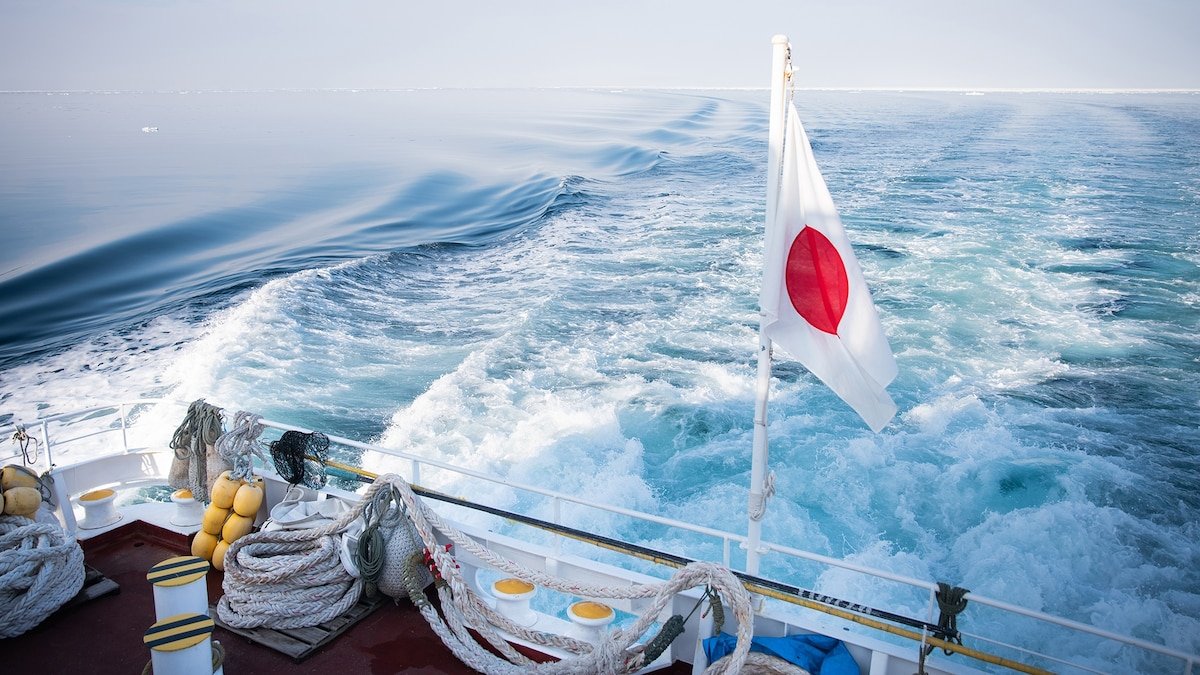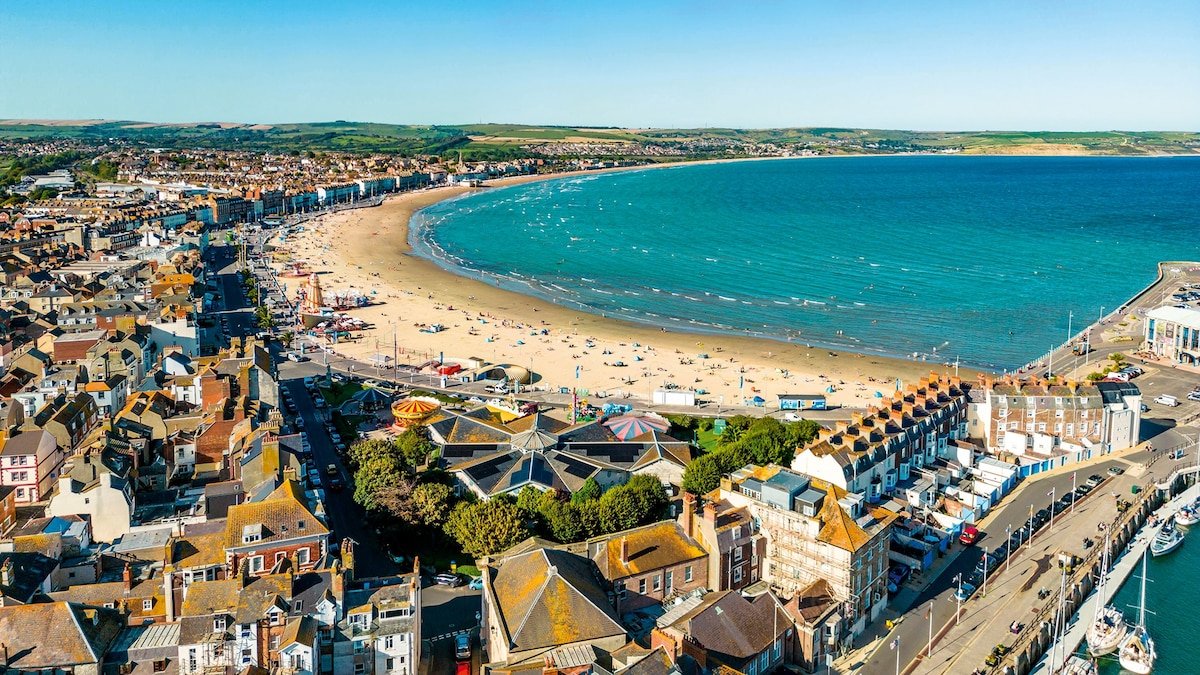Rome may be the Eternal City, but popes are mere mortal men. The earthly remains of most of history’s 266 popes over the past 1,961 years are buried in Rome, in dozens of crypts, catacombs, and cemeteries in, under, and around the city.
The very first was Peter, who began his life as a Galilee fisherman named Simon and became one of Jesus Christ’s first disciples. According to Christian tradition, Peter was crucified in the year 64 after a lifetime of traveling and preaching and was buried in a necropolis, or city of the dead, outside Rome’s city walls on the far side of the Tiber River. The remains of that necropolis were discovered directly under St. Peter’s Basilica in the 1930s, and another section under the Vatican walls has just opened to visitors.


This hole in the Graffiti Wall marked with Latin and Greek writing was found to contain bones, fragments of cloth, and other belongings believed to be associated with the Apostle Peter. Numerous sarcophagi have also been found in the necropolis.
Photographs by James L. Stanfield, Nat Geo Image Collection
Peter’s earliest successors as bishops of Rome were leaders of a tiny sect persecuted by the Roman Empire. They were interred in secret in underground catacombs excavated many stories deep into the soft rock along the Appian Way. These tomb complexes, which stretch literally for miles under rolling suburban countryside, are dark, fusty, and damp with endless corridors and steps descending ever deeper. Though the thousands of burial niches have been cleared of human remains, it’s easy to imagine early Christians cowering for their lives in these burial grounds by torchlight as Roman soldiers searched for victims to execute in the arena.
It was the first Christian Roman emperor, Constantine, who erected a church over the reputed place of Peter’s burial. Today, rebuilt several times with increasing grandeur, the spot is marked by Michelangelo’s towering St. Peter’s Basilica. As the premier church of the Catholic world, the vaults of St. Peter’s—which were given an orderly Renaissance makeover in the 16th century when the main basilica was rebuilt—are the ultimate VIP burial place not only for over 90 popes but also for European royalty. (Seven popes missed their slot in St. Peter’s due to exile when the papacy fled to Avignon, France, for much of the 14th century.) Pope Julius II, famous patron of Michelangelo, is buried in St. Peter’s, but oddly his monumental tomb is in another place entirely. The huge monument, on which Michelangelo worked for nearly four decades, was judged too grand by Julius’s jealous successors, who ordered the tomb constructed across town at the church of San Pietro in Vincoli, empty of its intended occupant.

The body of Pope Formosus, who had been dead for about seven months, was famously exhumed for a posthumous trial in 897. In a papal court, Pope Stephen VI accused the dead Formosus of perjury and of having acceded illegally to the papacy. At the end of the trial, Formosus was pronounced guilty and his papacy retroactively nullified. (Painting by Jean-Paul Laurens, 1870)
Photograph by Duncan1890, Getty Images
But of all the papal remains in St. Peter’s, those of Pope Formosus, who ruled from 891-96, have had the most postmortem adventures. Seven months after his death, Formosus’s successor, Stephen VI, had his body disinterred, dressed in papal vestments, and put on trial for usurping the papacy. Despite the efforts of a deacon appointed to defend the dead primate, Formosus was found guilty, and his body then stripped of the garments and dressed in rags. The three fingers of his right hand, with which he once gave blessings, were cut off, and his body was cast into the Tiber. But the body washed up downstream, and the waterlogged corpse was reported still to be performing miracles. A public uprising deposed and imprisoned Pope Stephen, who was strangled in prison in 897, at which point Formosus’s remains returned to St. Peter’s.
Exiled monarchs Queen Christina of Sweden and the Stuart pretenders to the English throne are also buried in St. Peter’s, and an assortment of royalty lies in a tiny enclave right next to the basilica known as the Teutonic Cemetery. During the long (and still open) investigation of the disappearance of Vatican resident Emanuela Orlandi—who vanished as a teenager in 1983–an anonymous tip-off after years of fruitless leads took police to the Teutonic Cemetery. In the search for the girl’s body, two graves of 19th-century German princesses were opened in 2019, but the graves were completely empty. There was no trace of Orlandi—or of the princesses. The mystery remains unsolved.


Pope Callixtus III’s tomb lies in the crypt of St. Peter’s Basilica, the final resting place of some 148 popes, including Pope Benedict XV (tomb at right) and John Paul II.
Photograph by Sipa USA via AP Photo (Top) (Left) and Photograph by Abaca Press, Alamy (Bottom) (Right)

The tomb of Pope Paul VI lies in the extensive system of vaults called the Vatican Grottoes, built under St. Peter’s Basilica in the 1500s.
Photograph by Guillermo Avello, Alamy
And now Pope Francis has joined his 265 predecessors. Francis was, famously, a breaker of stuffy Vatican traditions. On his election as pope in 2013 he insisted on riding the bus with his fellow cardinals back to their hotel, and also on paying the bill. He refused to move into the lavish state apartments in the Apostolic Palace, choosing instead a guesthouse on the Vatican grounds. And he opened the grand papal summer residence of Castel Gandolfo in the hills south of Rome to the public rather than live in it himself.
No surprise, then, that Francis’s arrangements for his own funeral broke the mold. He wanted his departure from the Vatican to be as low-key as his arrival.
Papal funerals have traditionally been regal affairs—quite literally, because until the middle of the 19th century, Rome’s popes were also the temporal kings of a large chunk of central Italy. Even Francis’s predecessor Benedict XVI was buried in three coffins of cypress, lead, and elm loaded with sacks of papal coins for each of the years of his reign and displayed on a raised catafalque in St. Peter’s Basilica.
No such pomp for Francis, whose body lay in state for three days in St. Peter’s in a plain wooden coffin placed at floor level.

Pope Francis’s body lies in state for three days at St. Peter’s Basilica before being moved to the Basilica of Santa Maria Maggiore—where he requested to be buried. He will be the first pope in over 350 years to be buried in Rome at St. Mary Major, where only seven other popes are buried.
Photograph by Vatican pool/Spaziani/picture-alliance/dpa/AP Images
Most surprisingly, Francis willed that he be buried not in St. Peter’s but in the Basilica of Santa Maria Maggiore—or St. Mary Major—on the Esquiline Hill, the first pope to be interred there since 1679. St. Mary Major’s was built in 432, a year after the Council of Ephesus declared Mary to be Theotokos, or “Bearer of God.” The stunning mosaics from that period are among the oldest representations of the Virgin Mary in the world, and a venerated Byzantine icon of her is housed in the basilica’s Pauline Chapel. More modern, and more controversial, moments of church history are also built into the fabric of the basilica. The vast 16th-century wooden ceiling is covered in some of the first gold brought back from the New World by explorer Christopher Columbus. As well as being the final resting place of seven popes, the basilica is the burial site of Cardinal Bernard Law, former archbishop of Boston, who became infamous for his role in covering up child sexual abuse by priests.


Mosaics from the fifth century and a ceiling gilded with gold said to have been brought to Europe by Christopher Columbus decorate the Basilica of St. Mary Major.
Photograph by Ivan Vdovin, Alamy (Top) (Left) and Photograph by Jozef Sedmak, Alamy (Bottom) (Right)

Pope Francis prays in the Cappella Paolina of the Basilica of Santa Maria Maggiore (St. Mary Major) on March 15, 2020. Before his death, Pope Francis asked for a simple tomb at the basilica, one “in the earth” and undecorated—except for a simple inscription: Franciscus.
Photograph by Sipa USA via AP Photo
Pope Francis’s attachment to St. Mary’s goes back to the beginning of his pontificate, when he started a tradition of praying there before and after every one of his hundred-plus foreign trips. He also made a point of praying for peace—most recently, for an end to the war in Ukraine, in 2022—by a statue of the Virgin in the basilica commissioned by a predecessor in 1918 and known as the Queen of Peace.
You May Also Like
During one visit to the church Francis noted an intriguing door, which gave him an idea for his last resting place. “Just beyond the sculpture of the Queen of Peace, there’s a small recess, a door that leads to a room where candelabras were stored,” Francis said in his 2024 book El Sucesor (The Successor), a long interview with journalist Javier Martinez-Brocal. “I saw it and thought: ‘This is the place.’ ” In his final testament, solemnly read out after his death, Pope Francis asked to be buried “in the earth, simply, without particular decoration” and with the inscription only of his papal name in Latin: Franciscus. The costs of the burial will be borne by “a benefactor” rather than by the church, Francis specified.
Death, burial, and rebirth are central elements of the Christian faith. Rome has seen empires, kings, and popes come and go. It has also seen its fair share of strange and controversial papal funerals (and, in Formosus’s case, reburials). Even if some elements of Francis’s funeral might be unusual by papal standards, he is nonetheless following firmly in the footsteps of a tradition with roots two millennia old.











